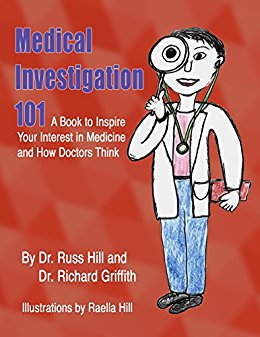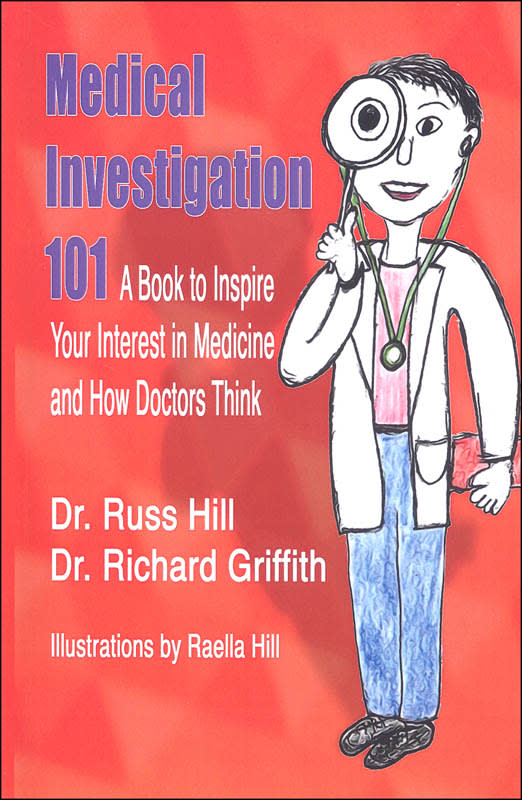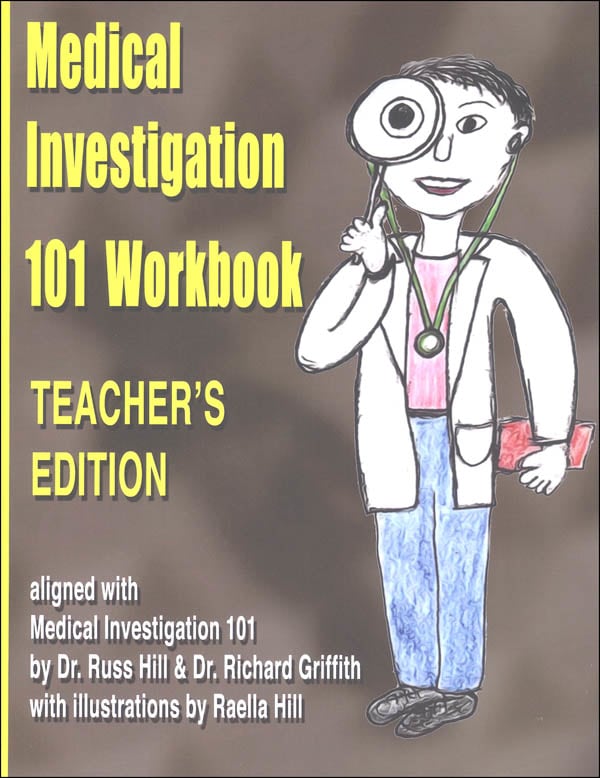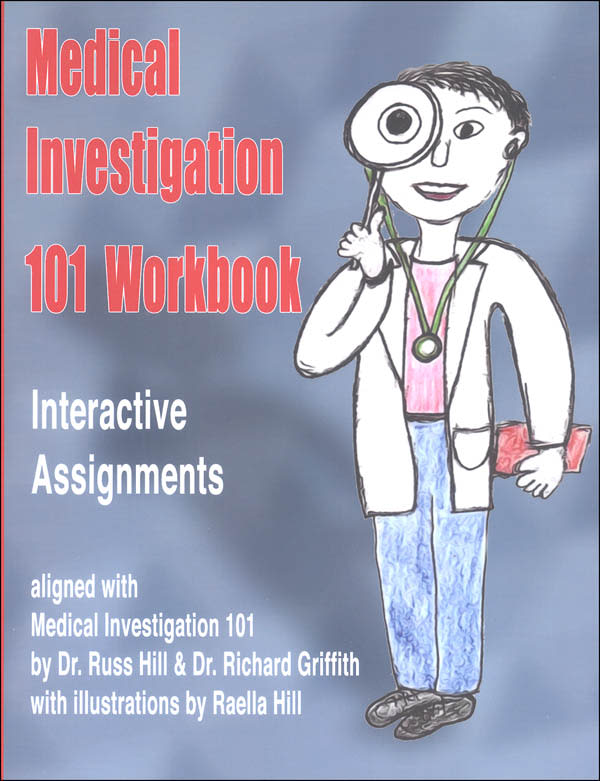Medical Investigation 101: A Book to Inspire Your Interest in Medicine and How Doctors Think offers a unique option for science curriculum for students in sixth through twelfth grades. The goal of the course is to interest students in potential medical careers, but I believe that the course will also be of interest to many students who have no idea what career path they want to pursue.
Those who enjoy watching medical mystery television shows such as House, as well as those who already exhibit a potential interest in a medical career are most likely to find this course interesting. Other students might enjoy it simply because it explores medical issues that they might have experienced, seen, or heard about. After all, we all have a body and have a vital interest in how it functions.
There are three components to the course: the 247-page textbook, the 264-page workbook, and the teacher’s edition. While the teacher’s edition is primarily for the workbook, it also includes some additional notes regarding each section in the textbook that might prove helpful. The teacher’s edition is essential as your answer key if you use the workbook.
The textbook begins with a discussion about different types of doctors, medical support teams, and the use of referrals to specialists. Next, it introduces the medical diagnostic process which is the major theme of the book. It explains how that process works and how medical practitioners arrive at their diagnoses.
The bulk of the book then discusses a wide range of medical issues such as sore throats, chronic diseases, food-borne illnesses, and head injuries. These sections often have a short introduction followed by a patient case study presented in the way a doctor approaches it. Each case study begins with the chief complaint that has brought the patient to the doctor. It reviews additional information such as symptoms, notes from the examination, a differential diagnosis if appropriate, a review of the patient’s medical records, a summary of tests performed, and treatment options. Sometimes a section will have more in-depth information on a topic such as environmental toxins. Along the way, students will glean practical information that might inform dietary and lifestyle habits or serve in medical emergencies.
The textbook includes a few questions and activities, but these are rare. While the textbook can be used as a stand-alone book, the workbook seems essential to me if you want to issue course credit.
The workbook has a number of activity pages for each section of the textbook. These teach and reinforce the vocabulary and concepts taught in the book. Worksheets vary from section to section, although vocabulary activities seem common to all lessons. For example, in Section 3.6A in the first of two sections on diabetes, the first activity has students write definitions for twelve terms using the text or a dictionary. The second activity has matching activities for the same twelve terms. I recommend removing pages from the workbooks and handing them out as you come to each. Otherwise, students might be tempted to do things like copy definitions from the match-up list rather than look them up themselves. Activity pages for this section continue with lines for students to create sentences using the twelve terms. The next six pages have students complete a “Diabetes Workup” using information from the textbook. This is done in the form of questions and other helps that direct students through the process. The section includes an assignment to interview someone they know who has diabetes; suggested interview questions are supplied. The section concludes with an assignment: “Write about the known effects of diabetes on the human body. Use your current knowledge and the internet to research the topic.”
Most sections in the workbook include a crossword puzzle and some have anatomical drawings to label, both of which help reinforce vocabulary.
The textbook can be read independently by students, but they would probably benefit from at least occasional discussion. A parent or teacher will likely know when discussion is most appropriate based on their situation. For example, I mentioned earlier that there are two sections on diabetes, 3.6A and 3.6B. A homeschooling family with a member who is diabetic would likely find these sections worth reading aloud and discussing while they might not care to discuss joint issues covered in 3.7B if it doesn’t apply to anyone they know. Middle school students will likely need more discussion than older students. It would also help all students to hear vocabulary words pronounced.
Even though the course will work with one or a few students, it was developed for use with larger group classes. One of the authors, Dr. Russ Hill, has taught the course to a group of students in grades six through eight. Even so, the reading level is a bit high for some middle school students. The course might be even better for high school level as long as you expand it with other resources. (You might want to supplement a course for middle school students as well.) While a few course activities work only with a larger group, these are rare and are not essential. On the other hand, workbook activities such as working through a diagnosis should benefit greatly from discussion either one-on-one or in a group.
I have to mention that adults might also find the book interesting to read. They can skip some of the first sections if they are already familiar with some of that information and quickly get into the investigative aspects of the book.
It is hard to judge how much time it will take to complete the course, but it does not seem like a full year’s worth of material. I would suggest complementing it with other resources such as Body by Design, Science Fusion: The Human Body, Human Anatomy and Physiology from the Young Explorer Science series, or Exploring the History of Medicine.
Medical Investigation 101 is certainly a different type of science course. However, what better way to interest students in science than to address topics that might be of imminent concern to them through courses such as this?











